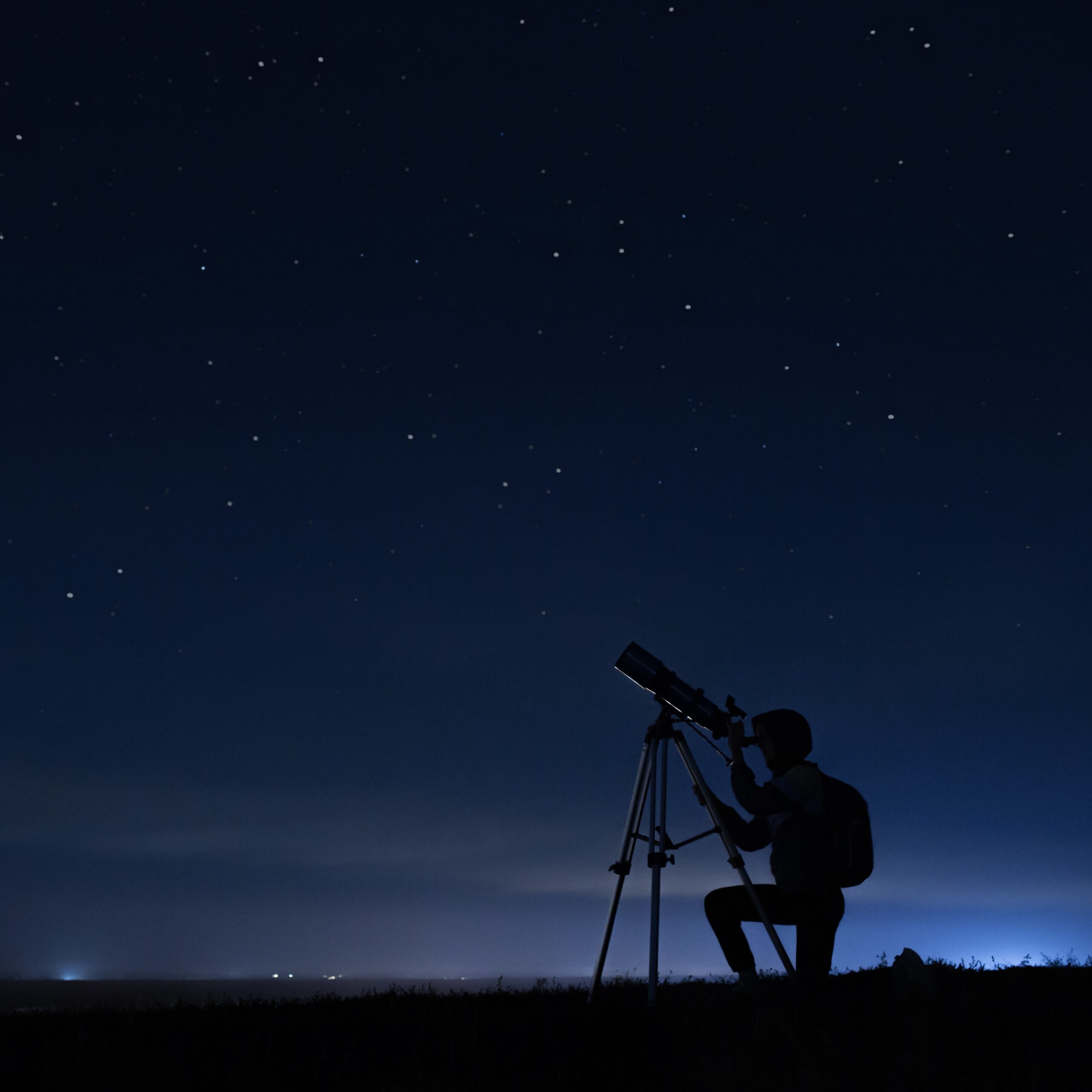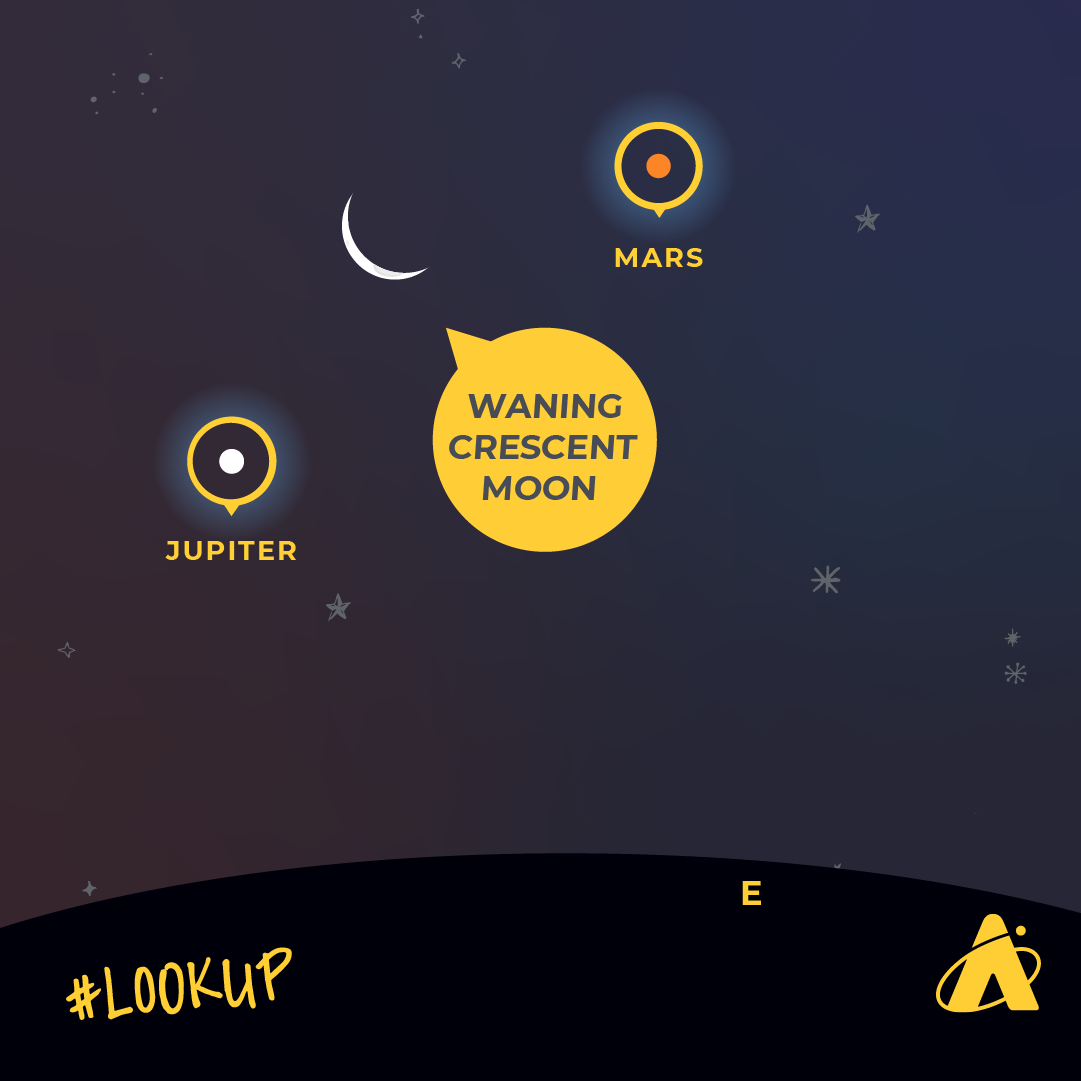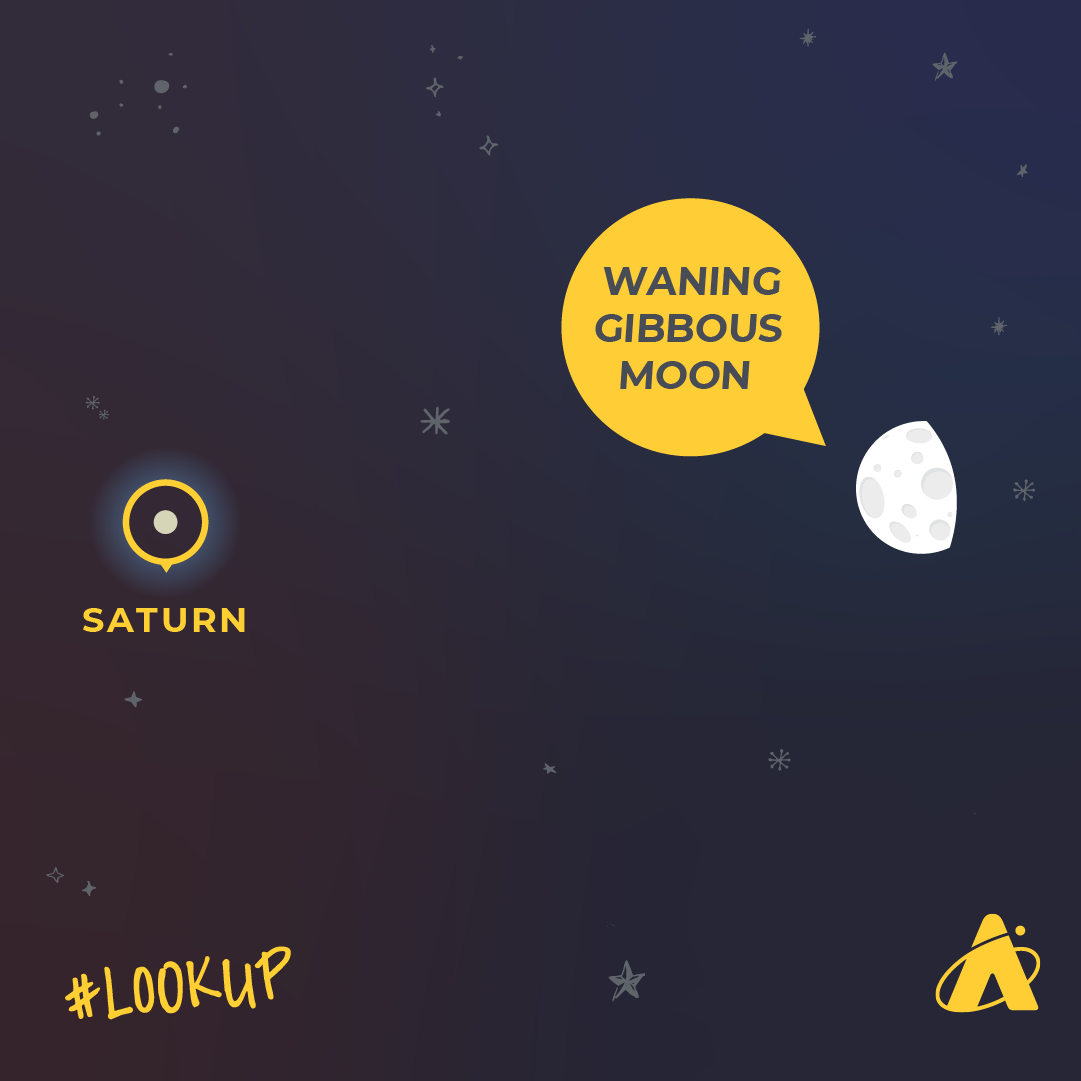Adler Skywatch: July 2024

Header Image: A silhouette of a person kneeling in front of a telescope aimed at the night sky. The background shows a dark blue night sky with dim stars in the distance.
The Earth will be a million miles further from the Sun than usual this month. But don’t expect things to get cooler in July, 2024!
On average, the Sun is roughly 93 million miles away from Earth. However, Earth’s orbit is not a perfect circle with all points equal from its center. Rather, Earth’s orbit is shaped like an ellipse, so it moves in an oval-shaped path around the Sun.
On aphelion, when Earth is furthest from the Sun for the year, it’s roughly 94 million miles away. This year, aphelion occurs on July 5. Earlier this year on January 2, Earth was at perihelion, or its closest point to the Sun during its orbit. During perihelion, Earth is more than 3 million miles closer to the Sun than it is at aphelion. The fact that Earth is furthest from the Sun during the warmth of July and at its closest in the midst of winter indicates that a 3 million mile difference in distance from the Sun doesn’t affect Earth’s weather.
Planets In The Predawn Sky
After spending the past couple of months mostly hidden in the glare of the Sun, the planet Jupiter is now fairly easy to see in early-morning darkness. It rises in the east-northeast almost two hours before the Sun at the beginning of July, and more than three hours before the Sun by month’s end. It’s brighter than -2 magnitude so it’s very easy to spot, outshining stars that are normally considered to be among the brightest. The morning of July 3, look for Jupiter to the right of a very slim waning crescent Moon. Jupiter fades into the morning twilight low in the east-northeast early in the month. As each morning passes, Jupiter pulls higher in the sky and away from the Sun’s glare. By month’s end, the planet is nearly 40 degrees high in the east before dawn blots it from view.
There’s another planet in the general vicinity of Jupiter this month—it’s just not quite as bright. Mars rises in the east-northeast, shortly after 2:00 am on July 1 and by about 1:30 am by July 31. Mars is slightly brighter than 1st-magnitude this month, and will continue to gradually get brighter through the end of the year. The mornings of July 1 and July 30, Mars appears near a waning crescent Moon. On July 2, you can find the slim waning crescent Moon in between Jupiter and Mars.

At the start of the month, Mars and Jupiter are about 20 degrees apart in the predawn sky. As the days pass, the two planets appear to move closer together. Compared to the backdrop of stars, Jupiter does not appear to move much. Mars, however, appears to slide down the sky, moving from the constellation Aries towards the constellation Taurus—where Jupiter spends this month. By July 31, the two planets appear only six degrees apart.
Evening Planet Spotting
Turning to the evening skies, Mercury sets about 60–80 minutes after the Sun. If you have a clear view to the west-northwest, try looking barely ten degrees above the horizon about 40 minutes or so after sunset. Your best chance of viewing Mercury is when it appears furthest from the Sun, from about July 11–14. The evening of July 7, a two-day-old crescent Moon is very low in the west-northwest. Mercury appears just below the Moon that evening.
The planet Saturn rises slightly south of east around midnight at the start of the month, and around 10:00 pm by month’s end. It’s around 1st-magnitude in brightness, and brightens very slightly each night of the month. The mornings of July 23–25, Saturn appears not far from a waning gibbous Moon. By the time the rising Sun makes Saturn hard to see, it’s almost 40 degrees high in the southerly skies.

The brightest planet, Venus, spends the month hidden from view in the glare of the Sun.
Moon Phases

New Moon: July 5
First Quarter Moon: July 13
Full Moon: July 21
Last Quarter Moon: July 27
Please note: these descriptions are for the Chicago area, using Central time.
Subscribe To Skywatch Wednesday This July!
Tour the sky with the Adler Planetarium’s Theaters Manager, Nick, in Skywatch Wednesday. Nick uses cutting edge visualizations, NASA images, and astrophotography to show you what you can see in the night sky throughout the year.
Check out Nick’s latest episode for your guide to summer stargazing! Nick explains how to see the summer triangle, our galaxy the Milky Way, Saturn, and zodiac constellations. Learn how to see the meteor shower of the summer, the Perseids, and this summer’s full Moons, including a blue Moon on August 19, 2024!
Learn From Our Astronomy Educators!
Watch exclusive live episodes of Sky Observers Hangout this July! Learn how to observe upcoming cosmic happenings, enhance your astrophotography skills, and see celestial objects through a telescope virtually with our astronomy educators.
In our newest episode, join our astronomy educators, Michelle and Hunter, to observe globular clusters through our Doane Observatory telescope in this cluster blockbuster! Globular clusters dazzle through telescopes with their tightly packed collections of tens or hundreds of thousands—or even millions—of stars! With some of these stars dating back to the early days of the universe, they give us insights into how stars form and evolve, and how galaxies collide and change.






